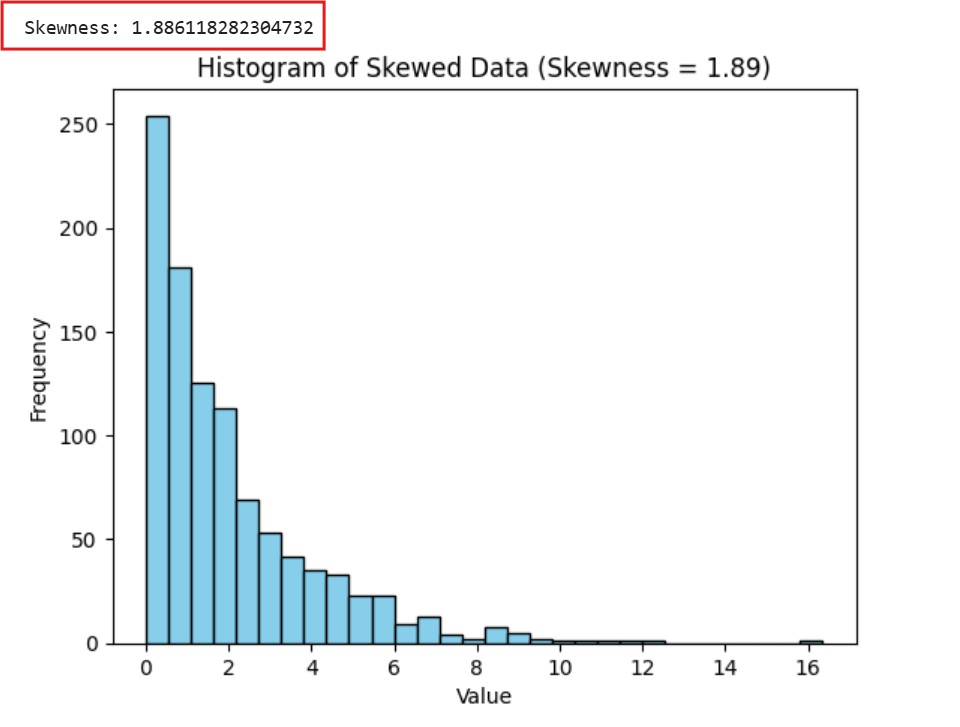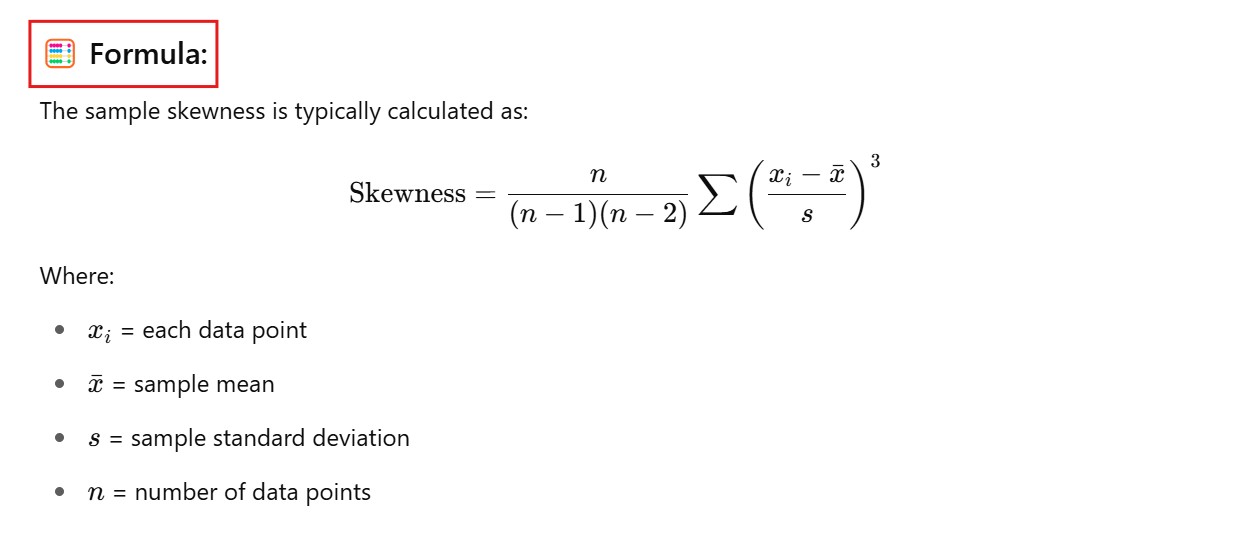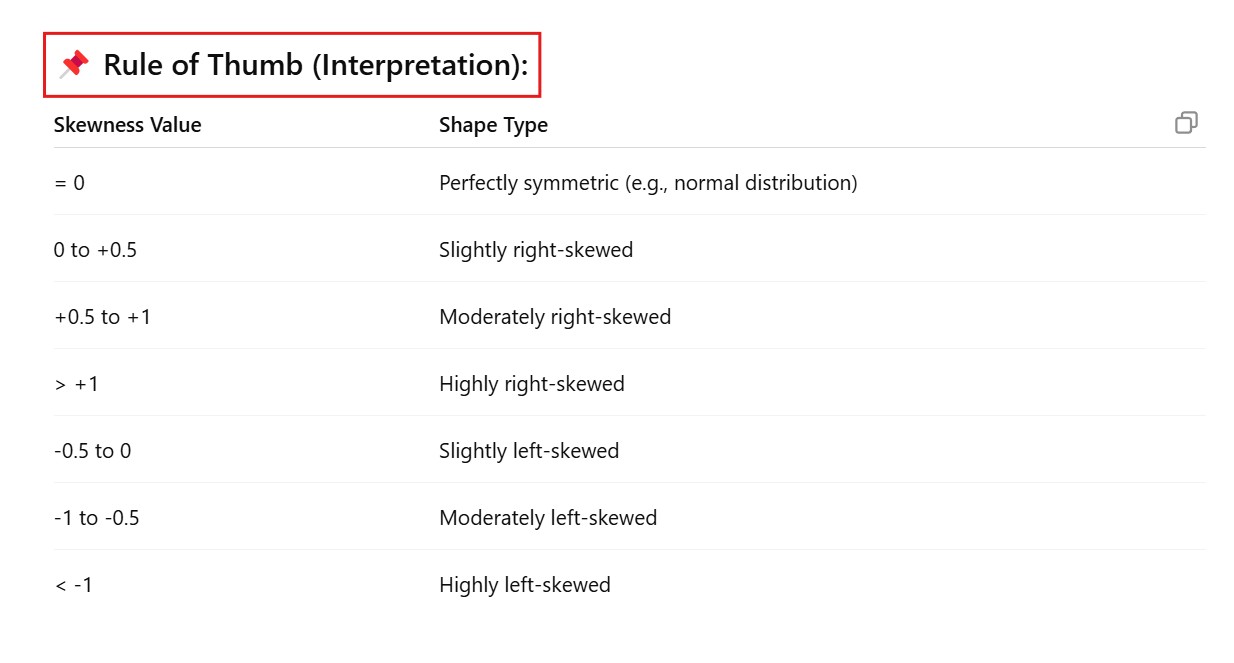Linear Regression – Interview Q & A.
Table Of Contents:
- Beginner-Level (Fundamentals)
- What is Linear Regression?
- What is the equation of a simple linear regression model?
- What are the assumptions of linear regression?
- What is the difference between simple and multiple linear regression?
- What do the coefficients in a linear regression model represent?
- How do you interpret the intercept and slope in a regression line?
- What is the cost function used in linear regression?
- What is the difference between correlation and regression?
- What is Mean Squared Error (MSE)?
- How is R-squared interpreted?
- What does an R-squared of 0.85 mean?
- What is adjusted R-squared? Why is it used?
- What is multicollinearity? How do you detect it?
- What is the role of the p-value in linear regression?
- Intermediate-Level
- What is the difference between MSE, MAE, and RMSE?
- What happens if the linear regression assumptions are violated?
- How do you check the linearity assumption?
- What is heteroscedasticity and how can you detect it?
- How do you handle categorical variables in linear regression?
- Why do we use dummy variables?
- What is the Variance Inflation Factor (VIF)?
- How would you handle missing data before fitting a linear regression model?
- How do you regularize a linear model? (L1, L2)
- When would you prefer Ridge over Lasso regression?
- How do outliers affect a linear regression model?
- How do you detect and deal with outliers?
- Can linear regression be used for classification?
- Advanced-Level (Experienced)
- How does gradient descent work in linear regression?
- Why might you prefer gradient descent over the normal equation?
- What is the time complexity of fitting a linear regression model using the normal equation?
- Explain the bias-variance tradeoff in the context of linear regression.
- Why does adding more features reduce bias but increase variance?
- What is model overfitting and how can regularization help?
- How would you evaluate a linear regression model’s performance?
- How would you do feature selection for linear regression?
- How would you validate a linear regression model?
- Give an example of a real-world use case for linear regression.
- What are the limitations of linear regression in practice?
- What steps would you take to deploy a linear regression model?
- How would you interpret a regression model to a non-technical stakeholder?
- Bonus: Tricky & Scenario-Based
- What happens if you fit a linear regression model to non-linear data?
- How do you handle high-dimensional data with linear regression?
- Suppose your model has high R² but performs poorly on test data. Why?
- Can you explain what regularization does geometrically?
- What if two features are highly correlated — what would you do?
(1) What Is Linear Regression ?

(2) What Is The Equation Of The Simple Linear Regression Model ?
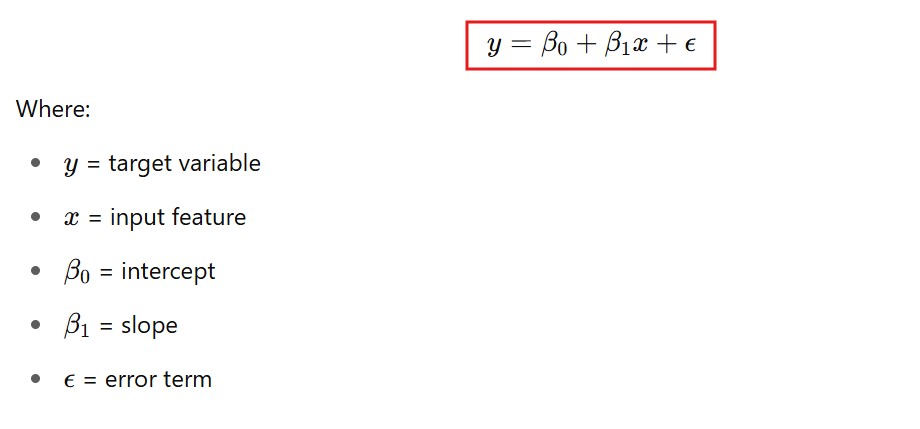
(3) Assumptions Of Linear Regression Model
- Linear Relationship Should Present.
- No Multicollinearity.
- Normality Of Error Term.
- Homoscedasticity.
- No Autocorrelation In Error Term.
(4) Simple Vs Multiple Linear Regression.

(5) What Do The Coefficients Of Linear Regression Represents ?
- The coefficients of the Linear Regression model represents the strength of relationship between the independent and the dependent variable.
- The coefficients have no fixed range it can be of any value.
- But the coefficients can have the positive or the negative sign which represents the direction of the relationship.
- If input features are standardized (mean=0, std=1), then coefficients reflect relative importance more clearly.
(6) How Can We Compare Coefficients Of Different Features ?
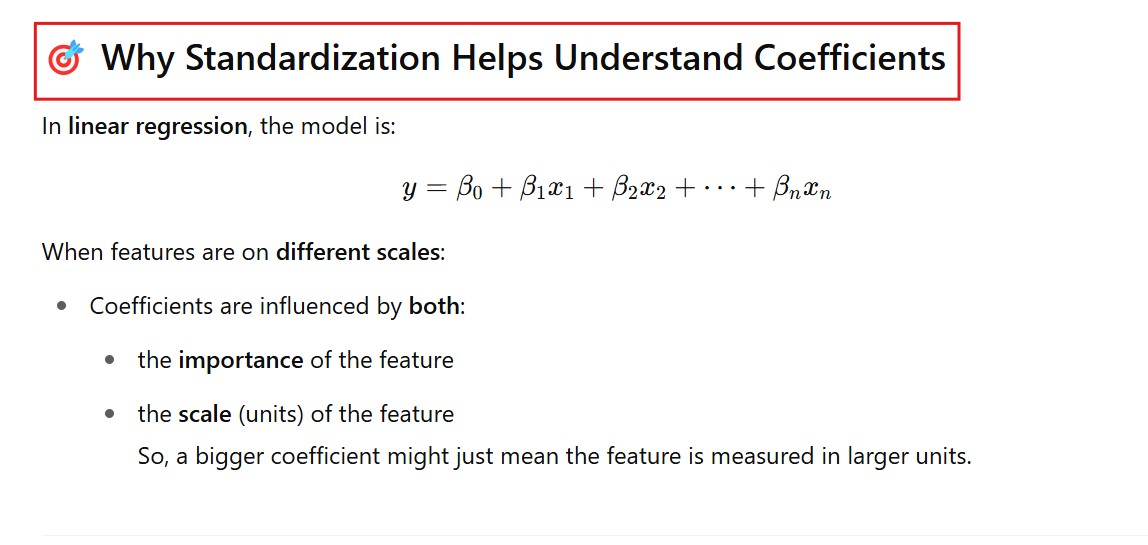


(7) What Does Slope & Intercept Represents ?


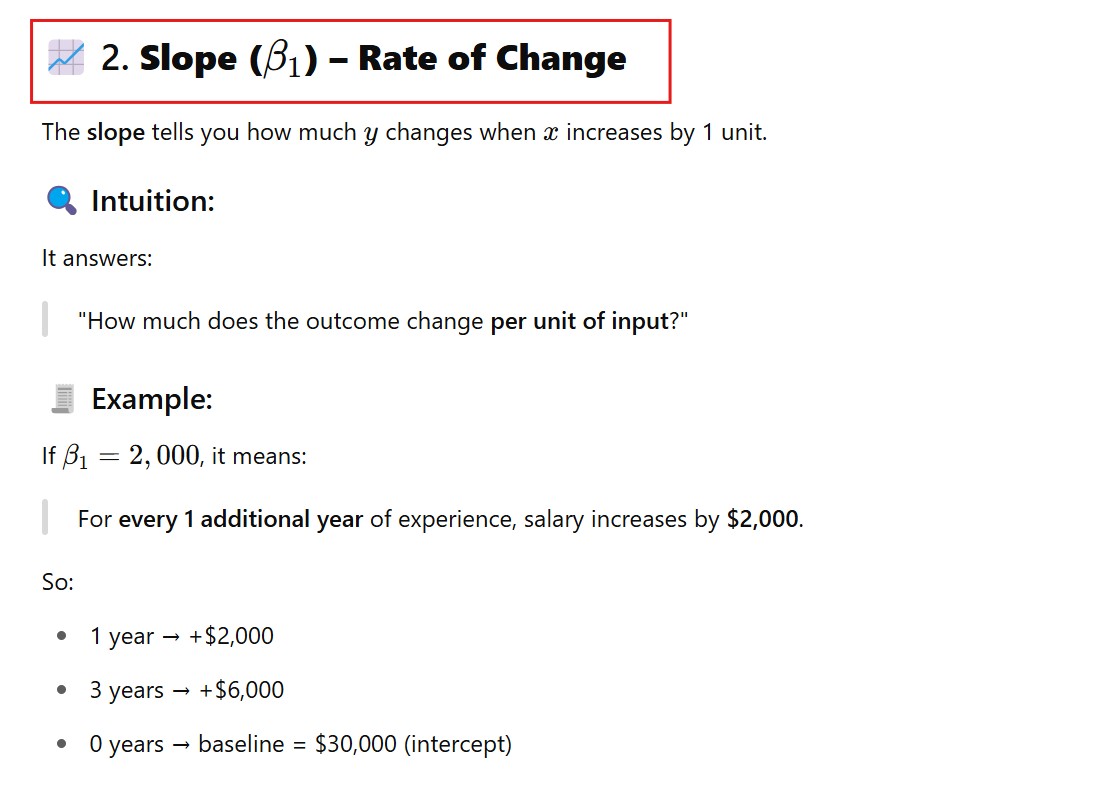
(8) Cost Function Of Linear Regression Model.

(9) Difference Between Correlation & Regression.
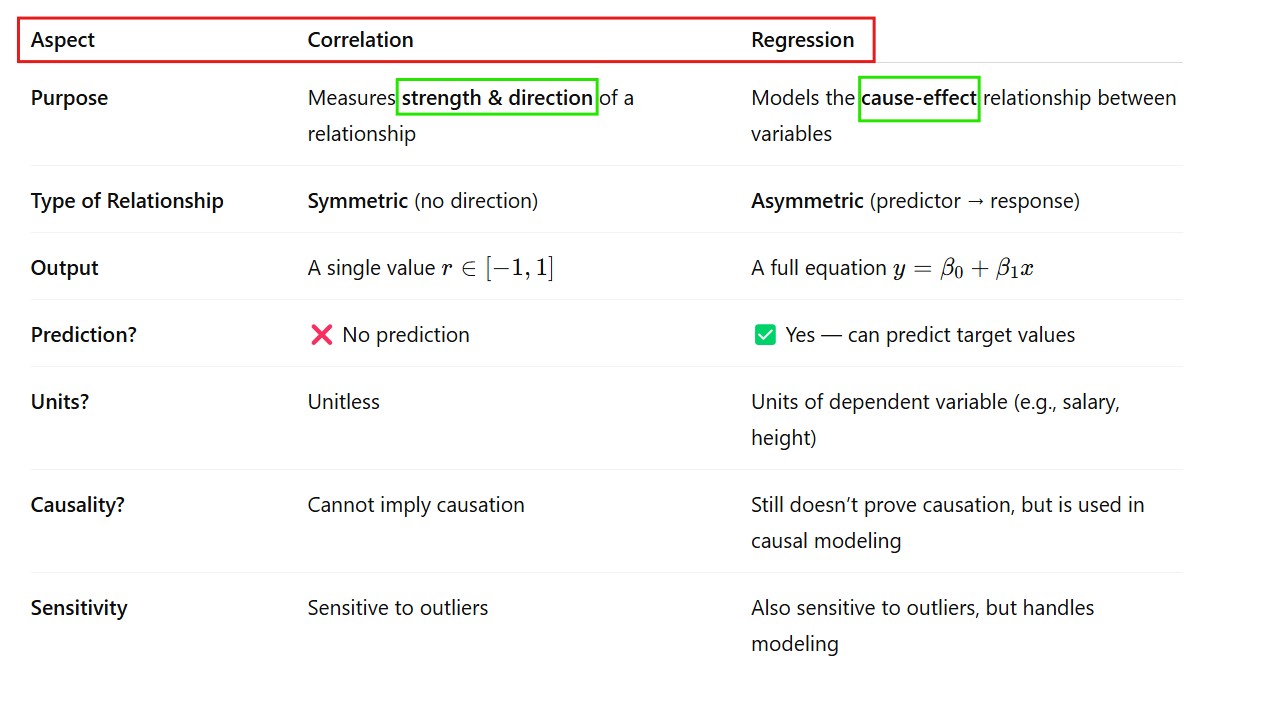
(10) What Is Mean Squared Error ?

- The average of sum of squared difference between actual and predicted values.



- Interims of reducing the larger MSE error the optimizer will reduce the error for the data point having maximum error .
(11) What Is R – Squared ?


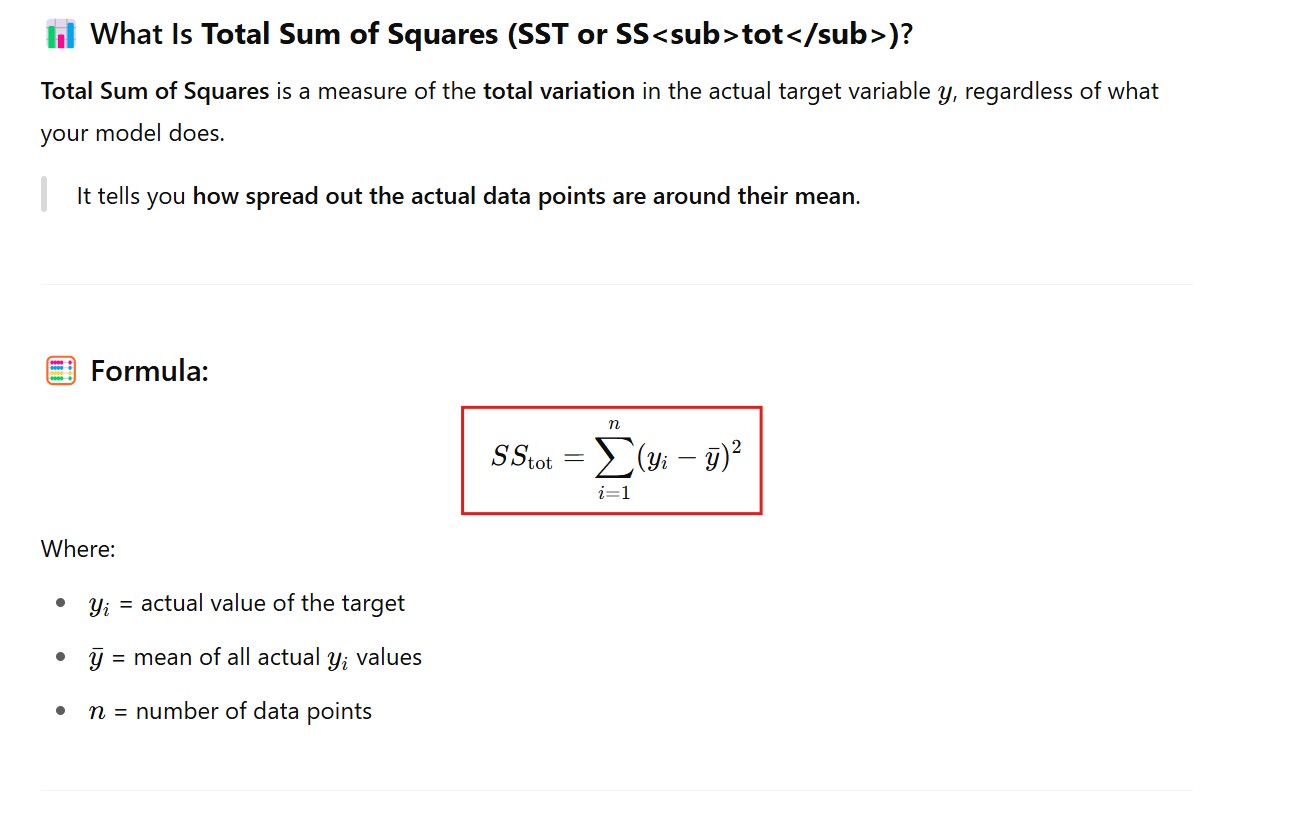

(12) What Is Adjusted R – Squared ?



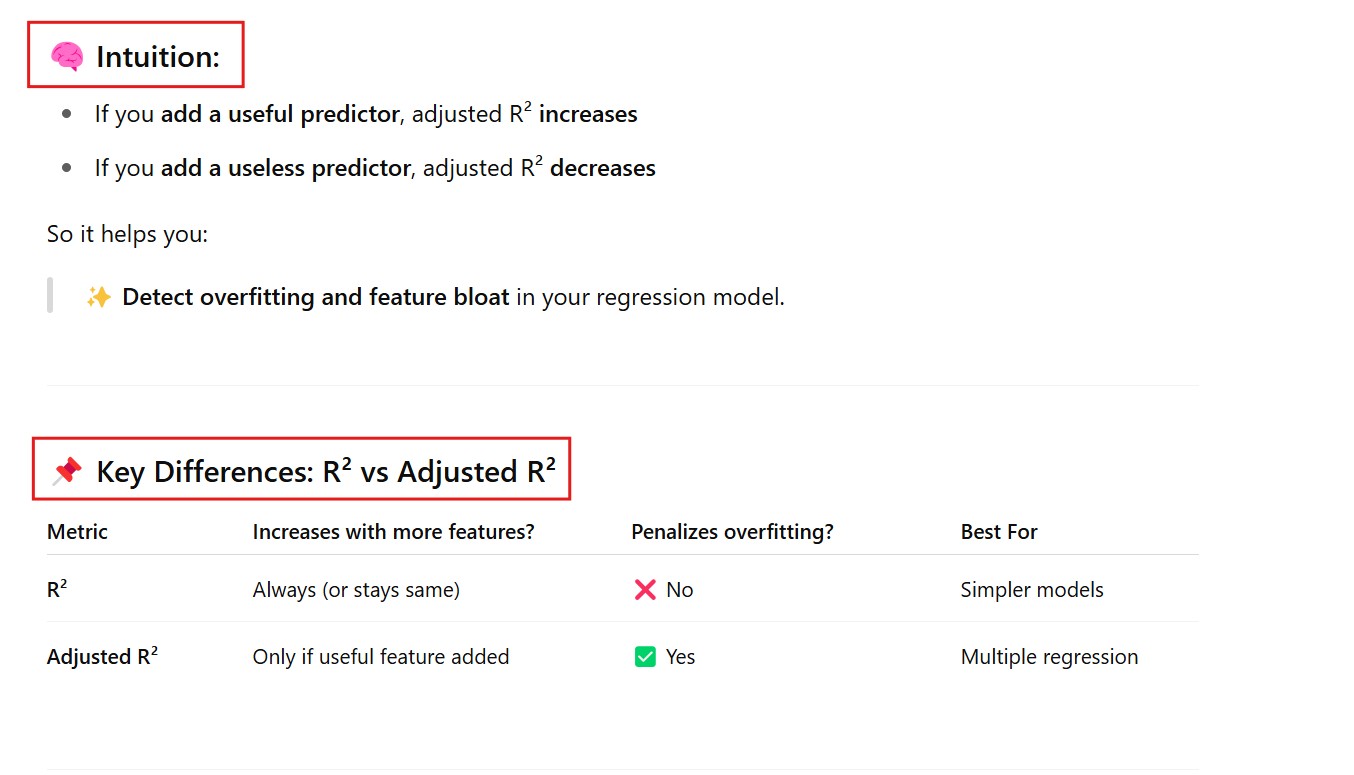
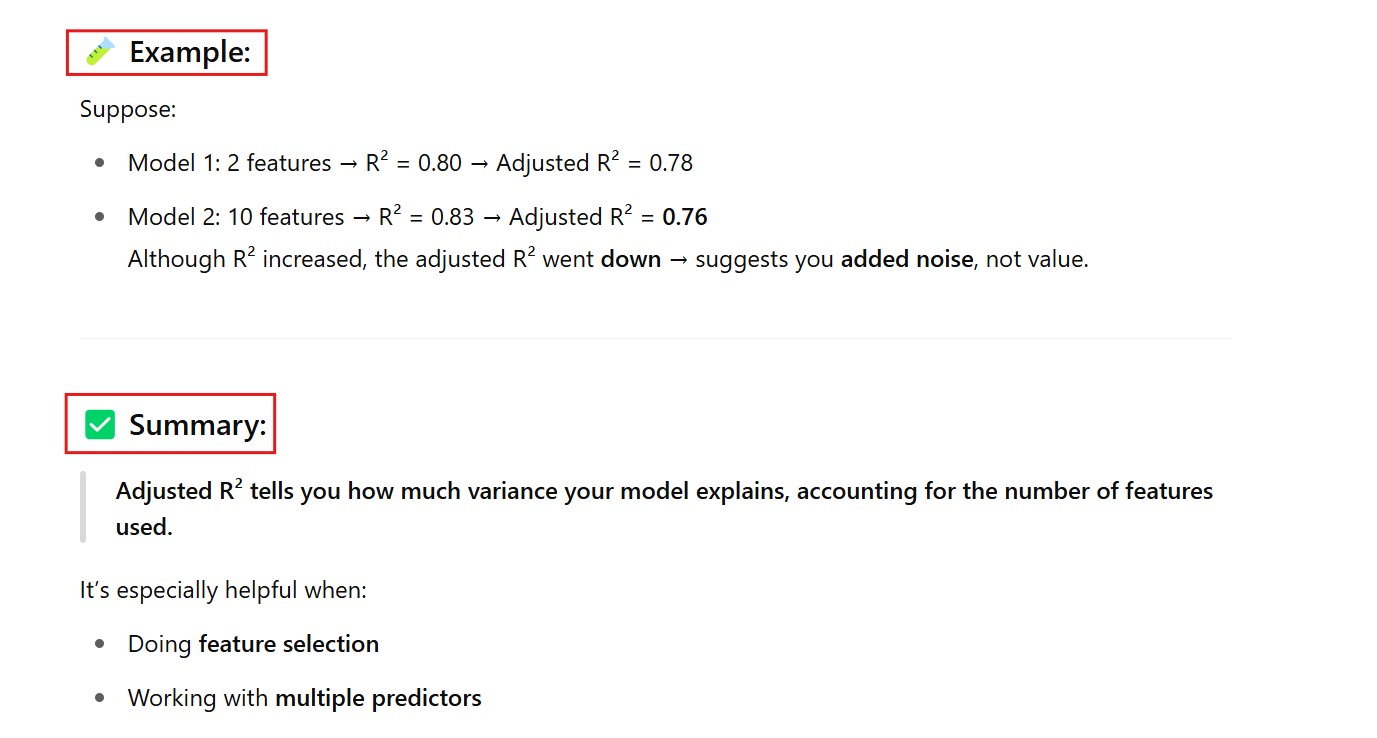
(13) What Is Multicollinearity ?
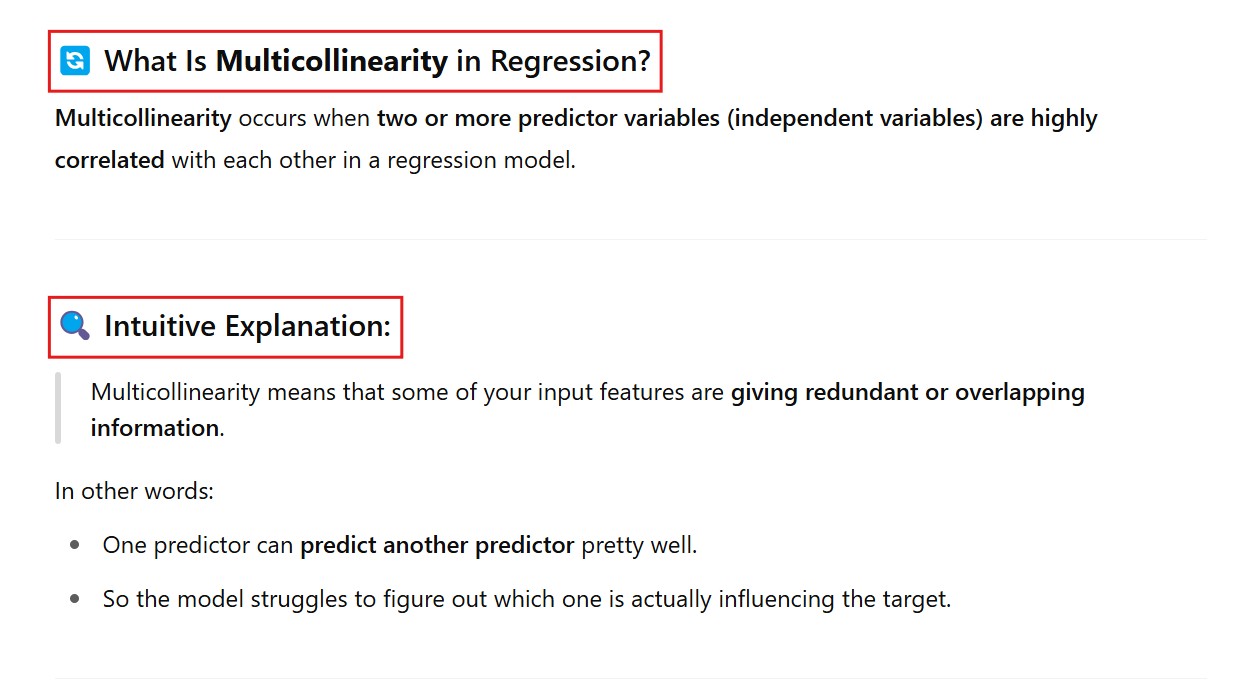


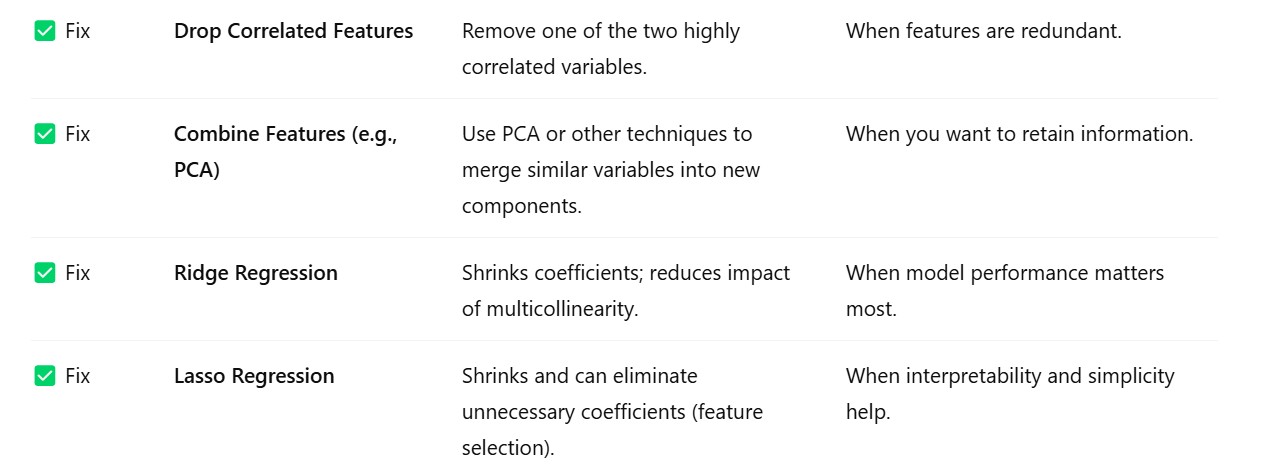
(14) What Is The Role Of P – Value In Linear Regression ?




(15) What Is The Difference Between MSE, MAE, and RMSE ?
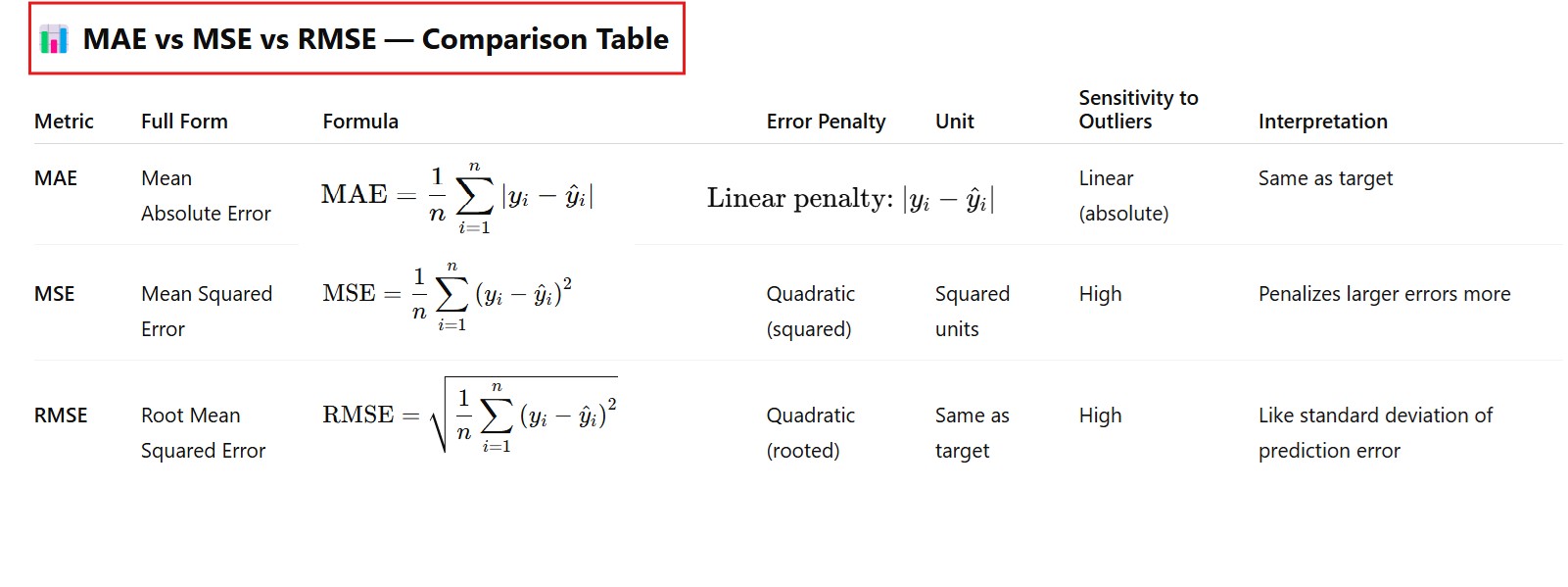
(16) What Happens If The Linear Regression Assumptions Are Violated?


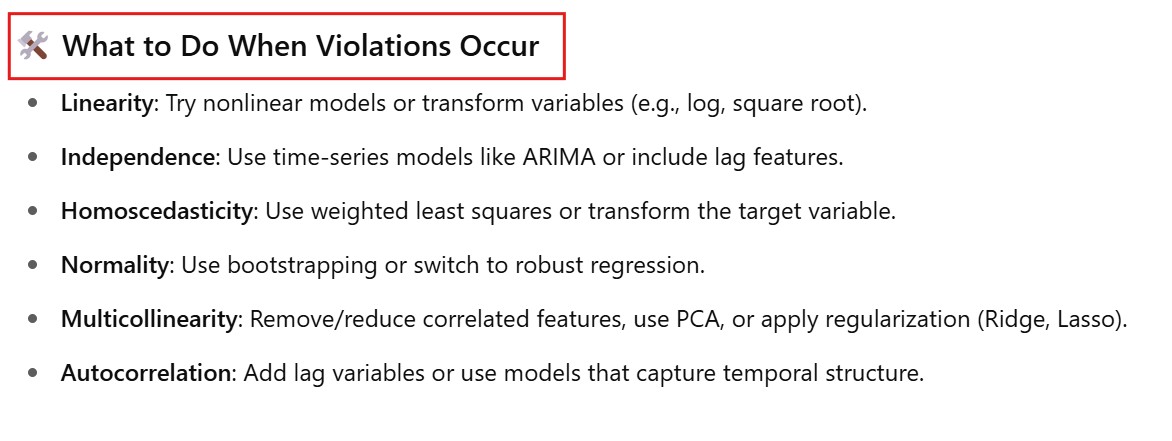
(17) What Is Linearity Assumption ?

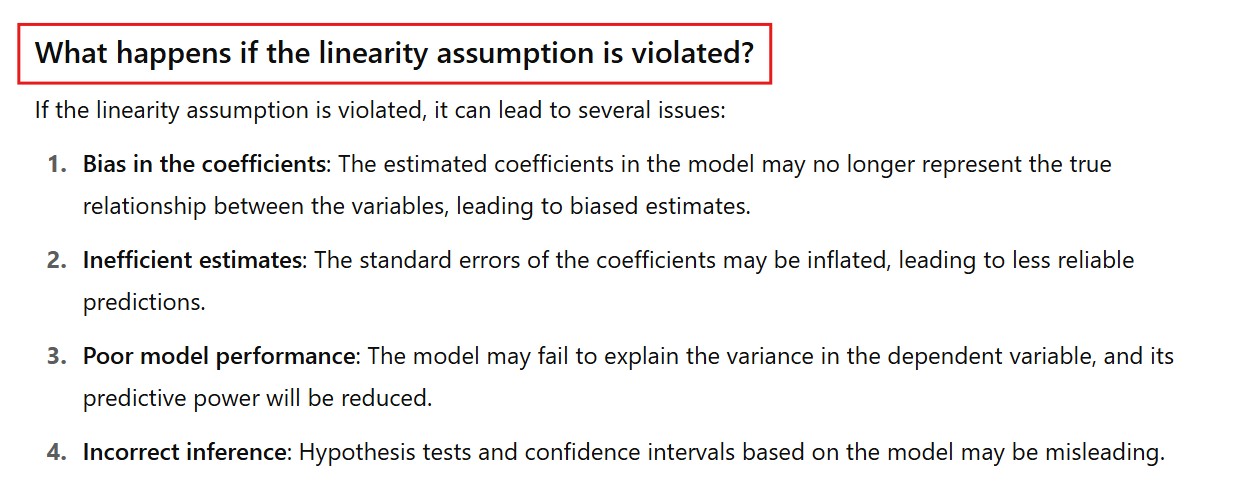
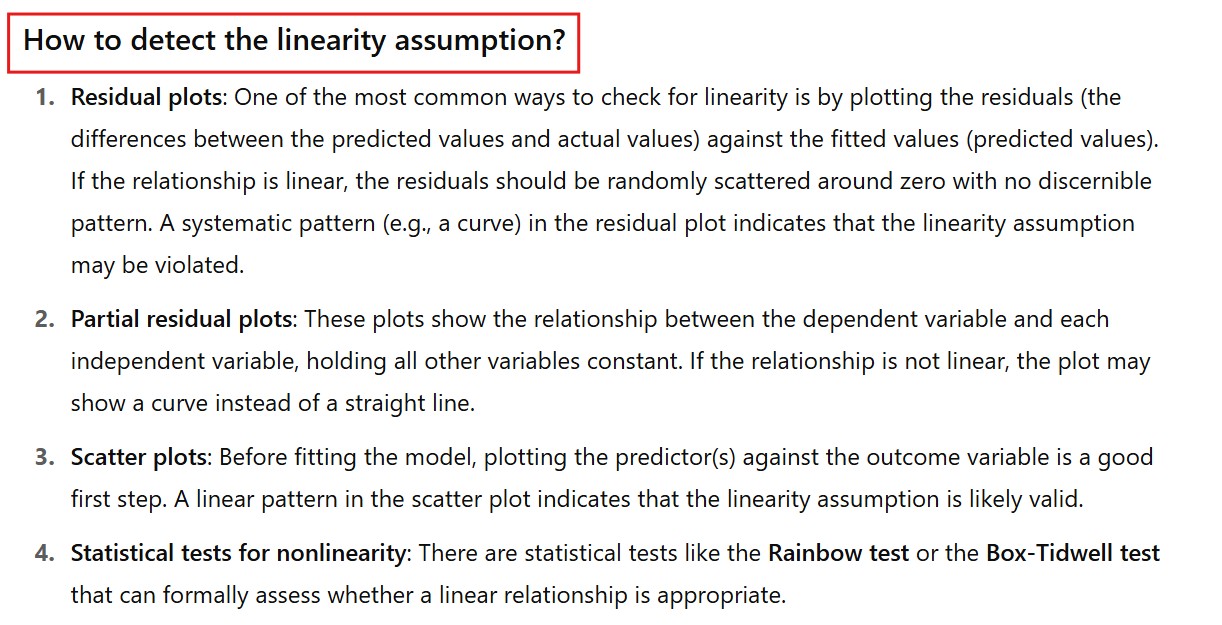
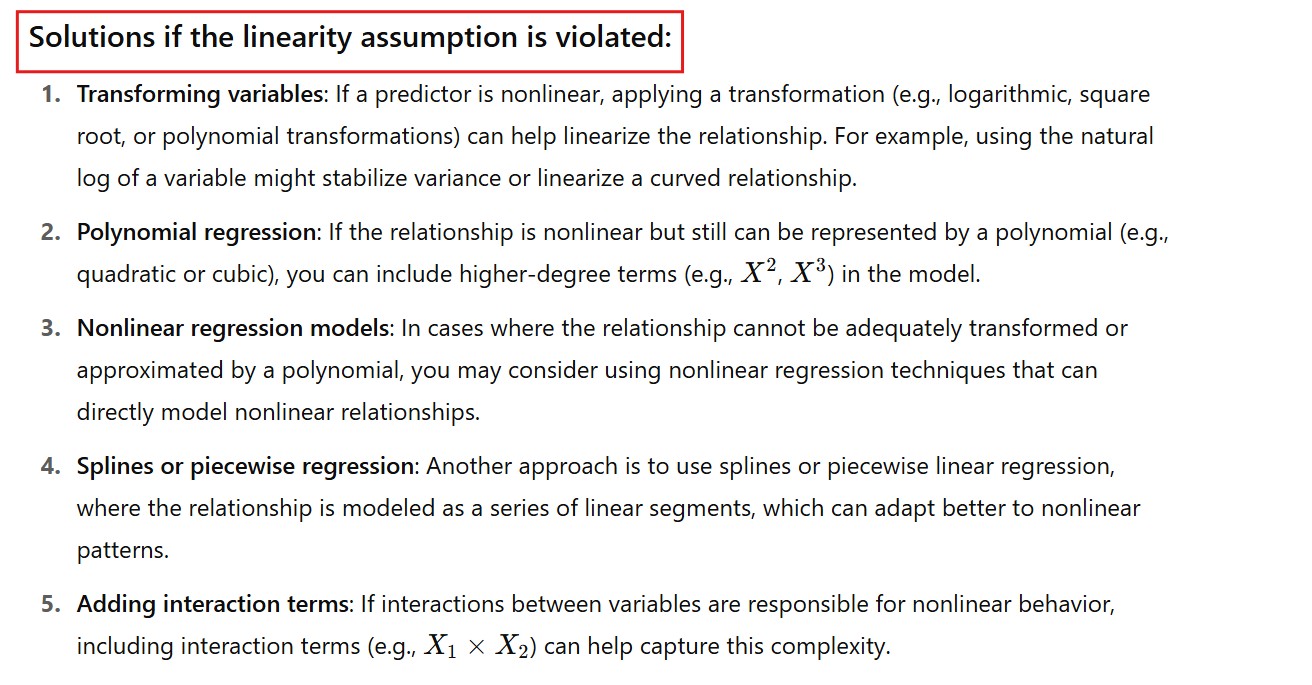
(18) What Is Homoscedasticity Assumption ?
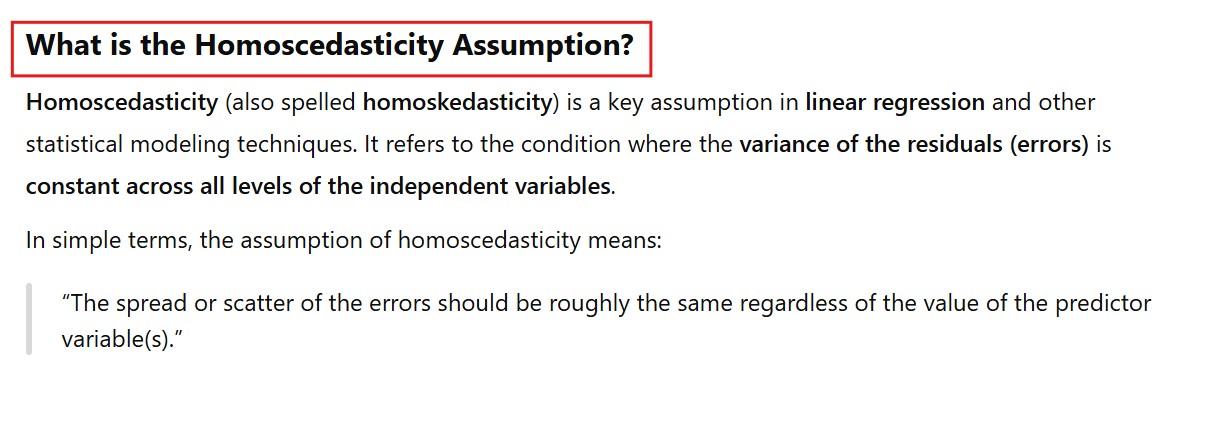
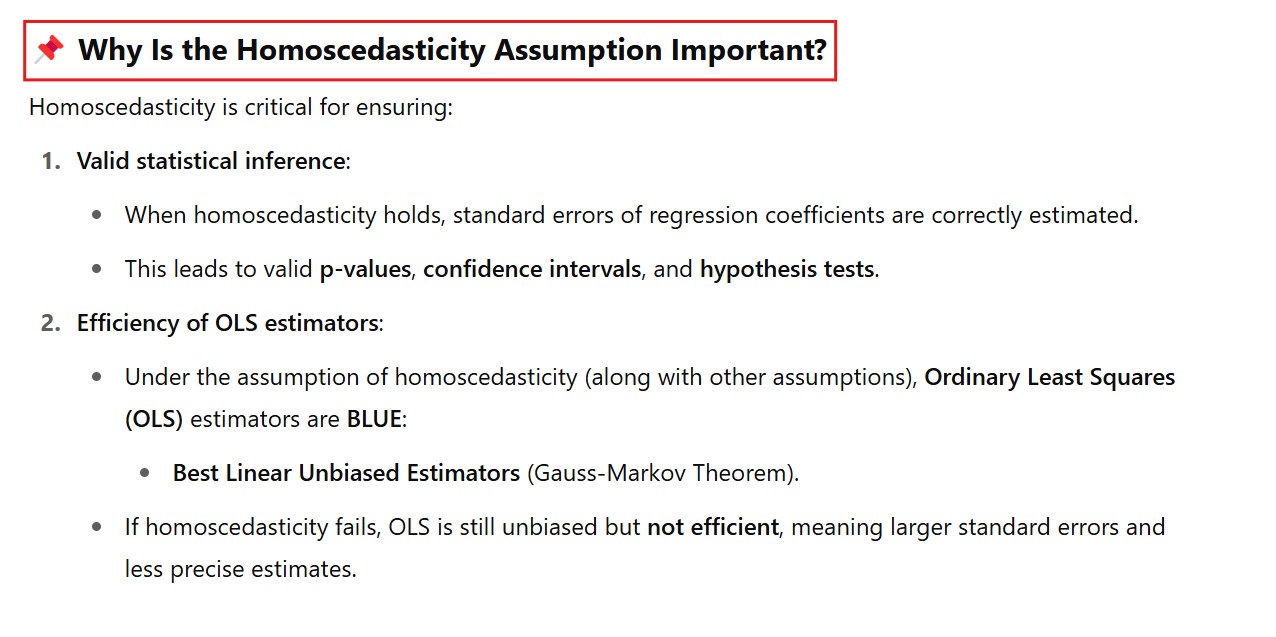
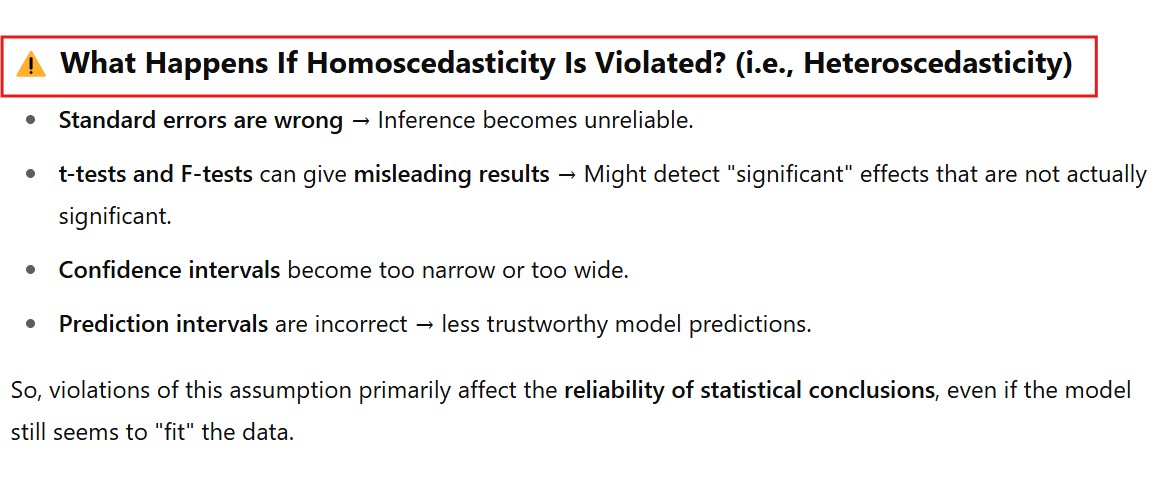
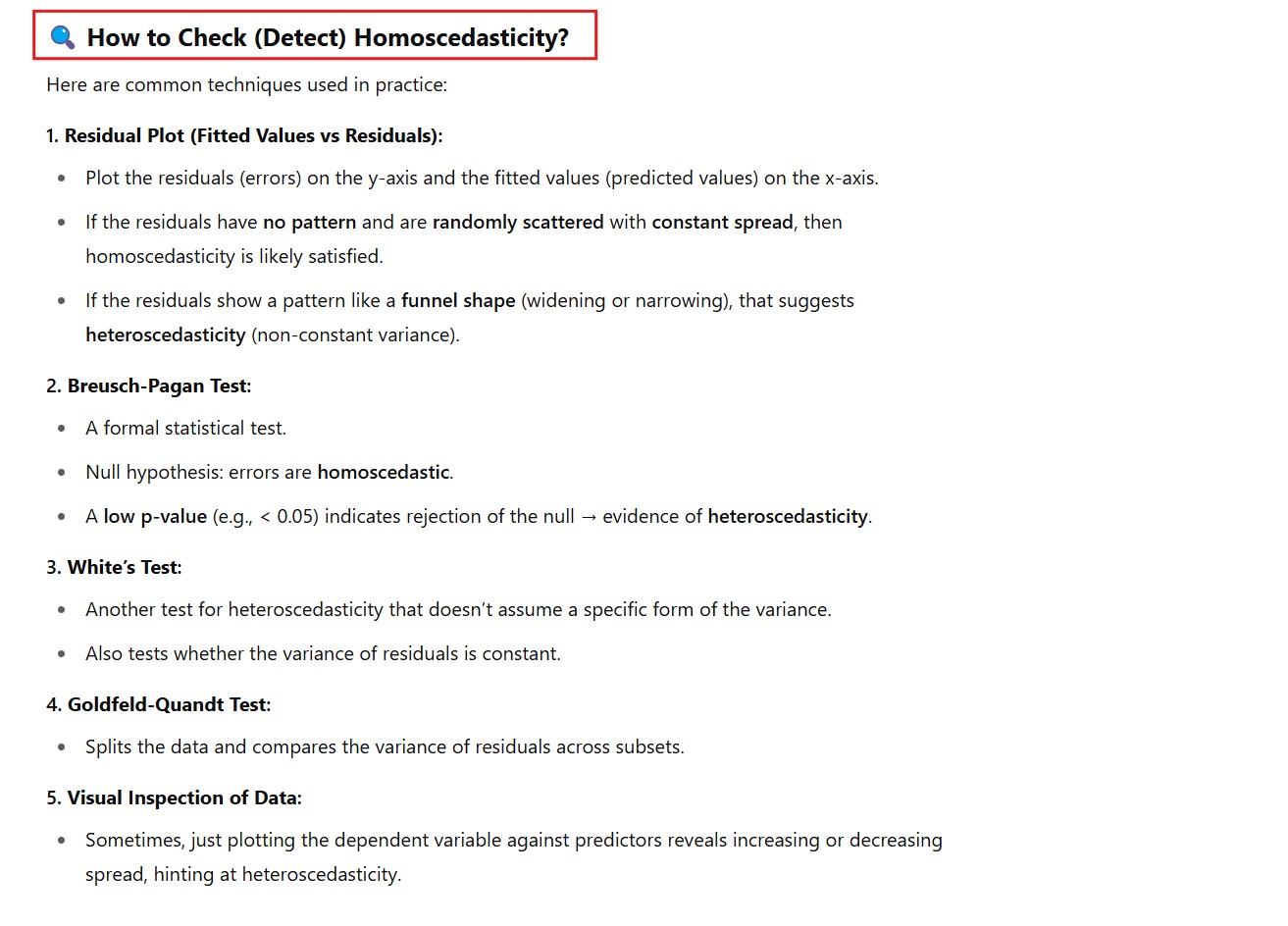
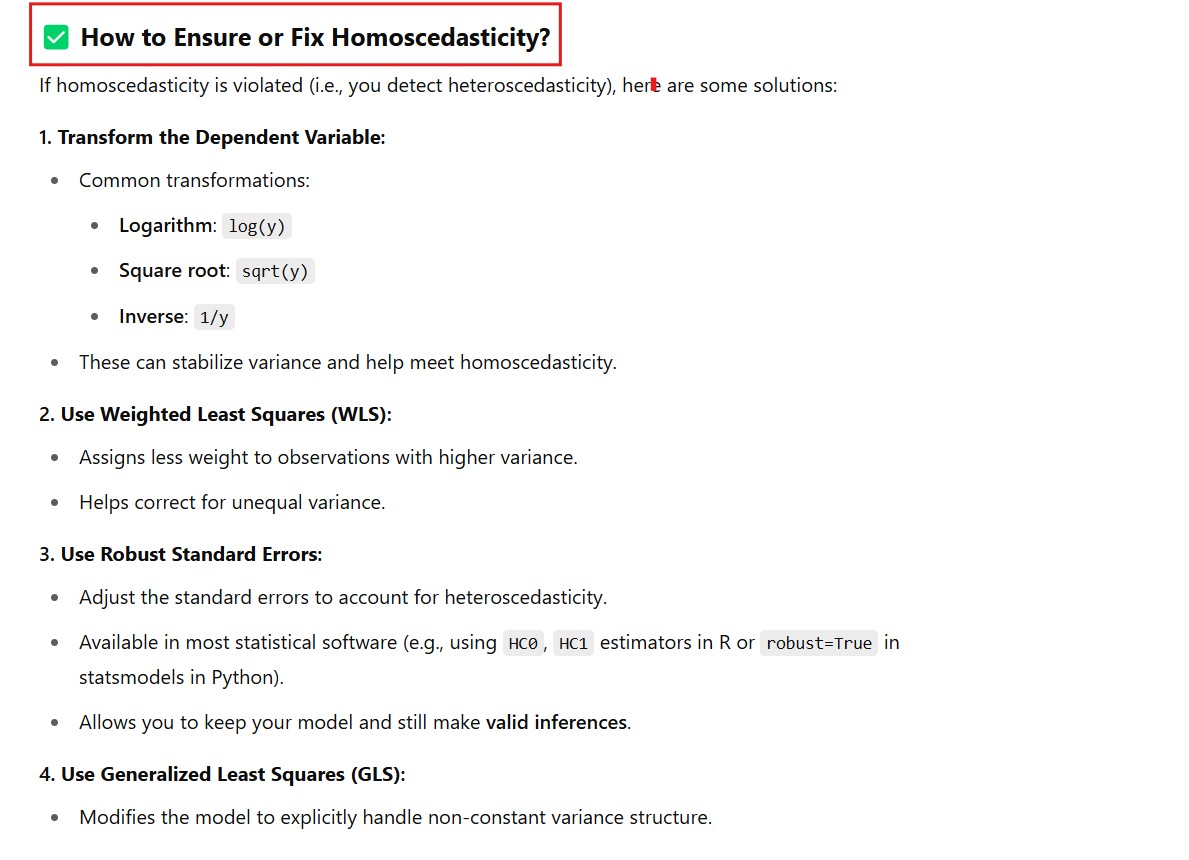

(19) What Is Error Normality Assumption ?

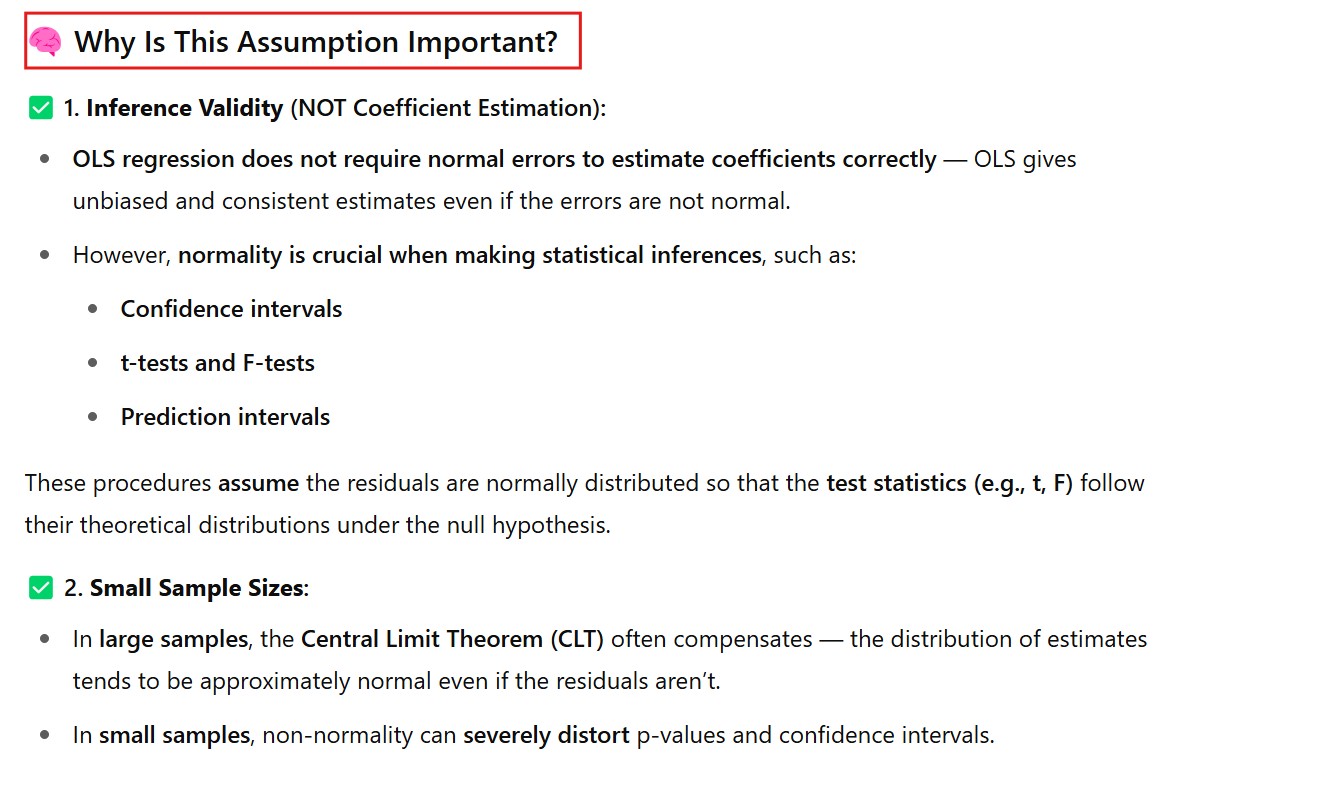
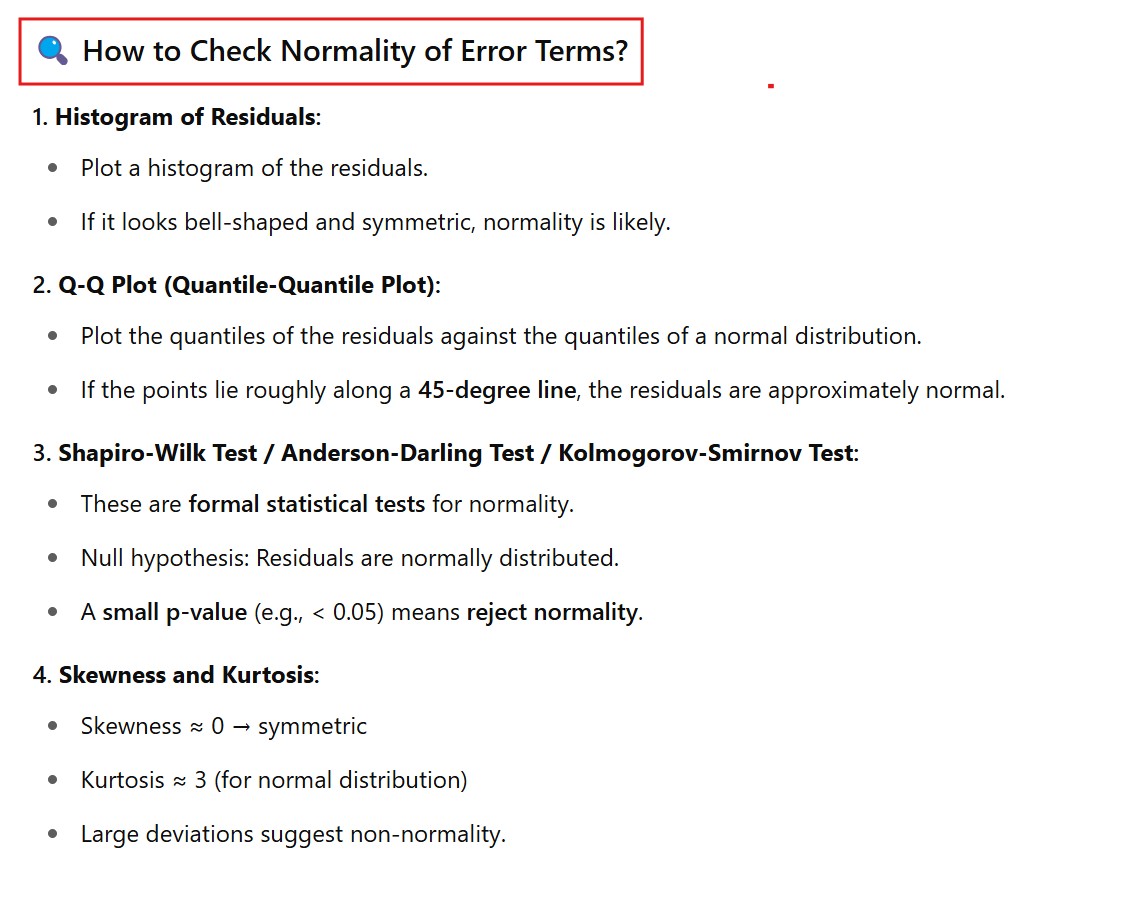
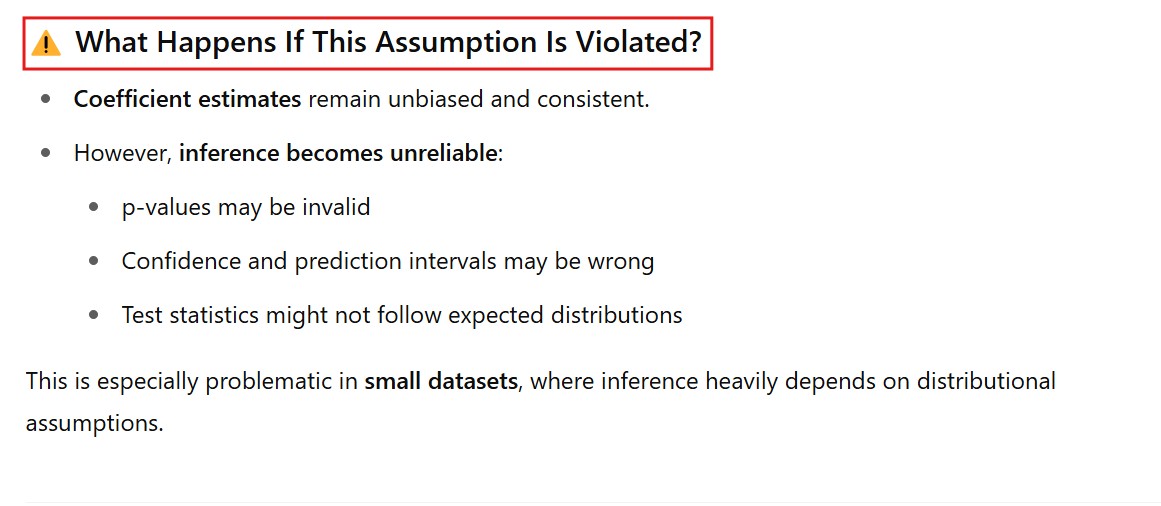
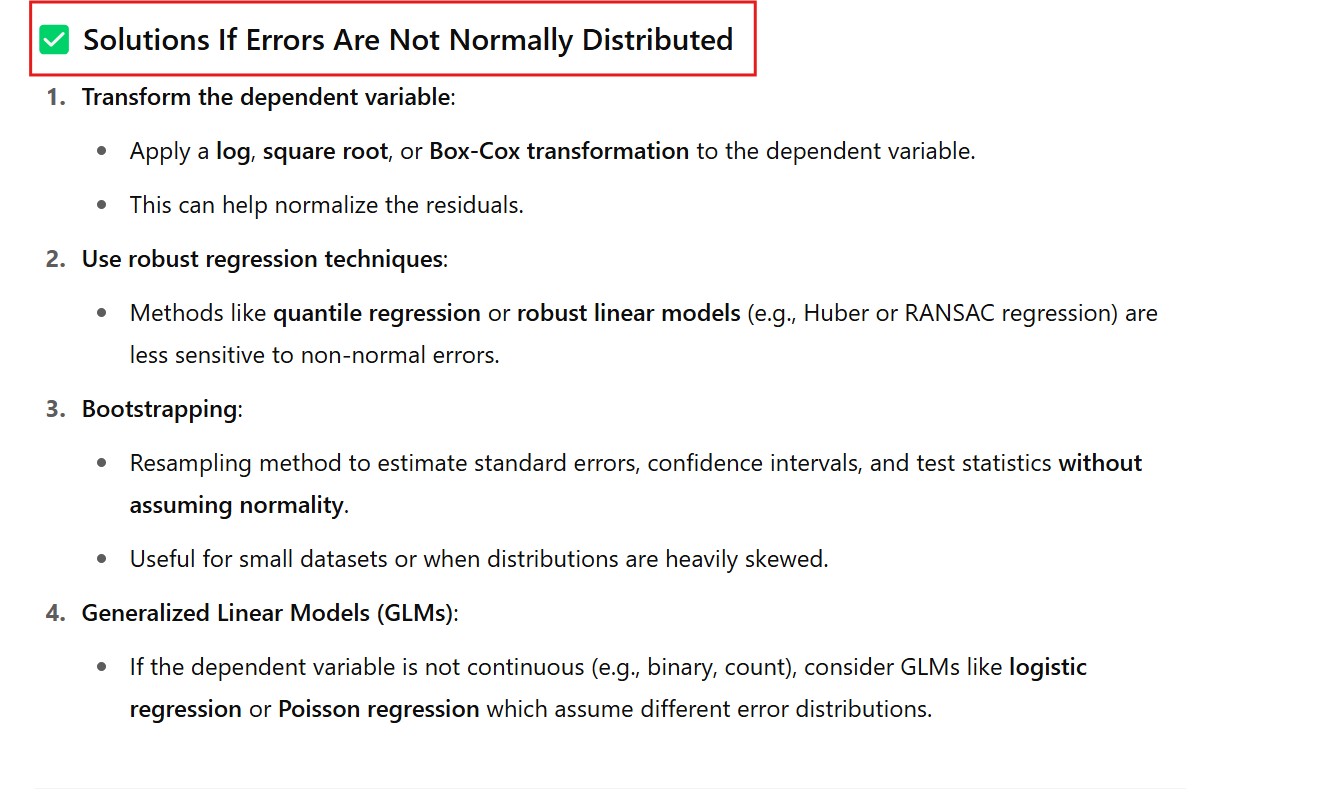
(20) What Is No Auto-Correlation Assumption ?

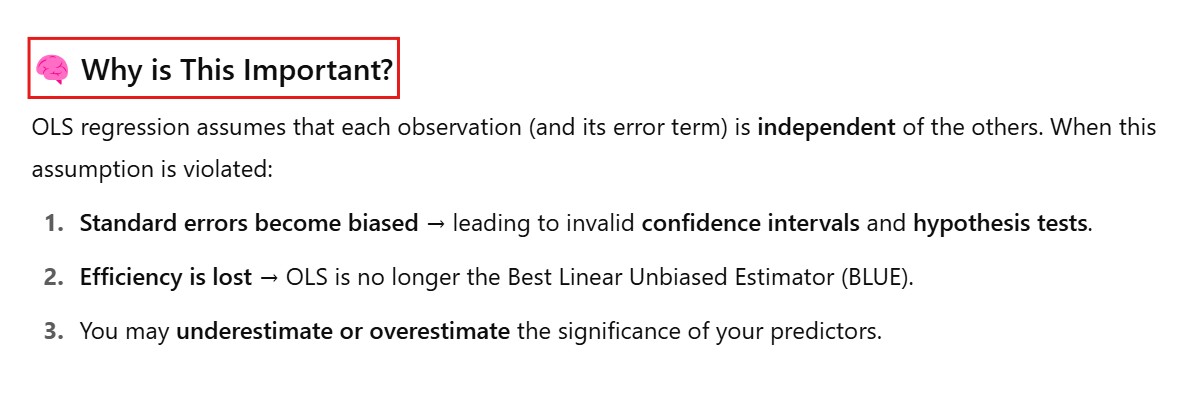
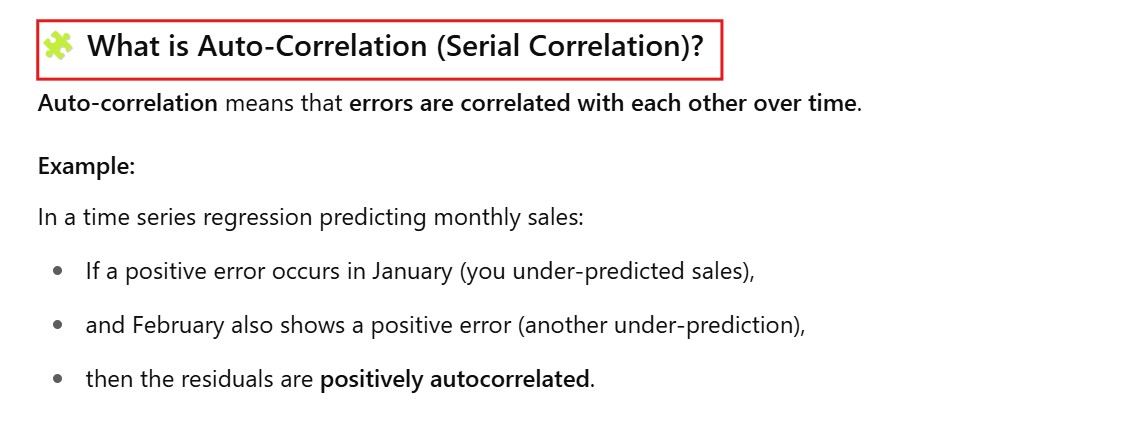


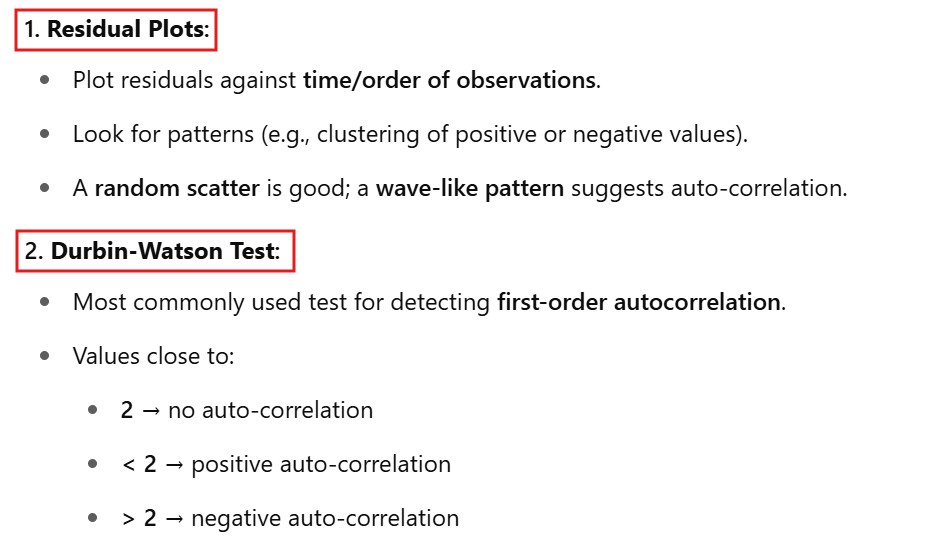

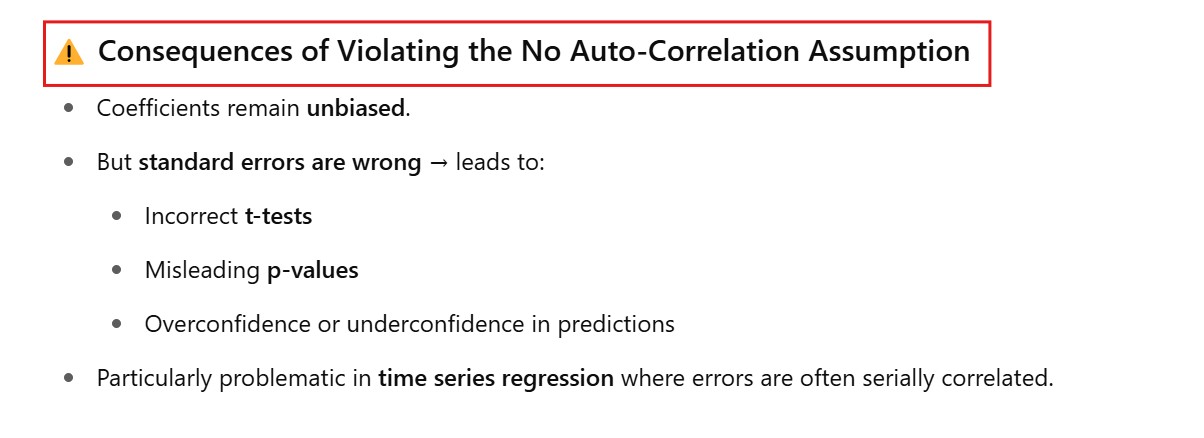
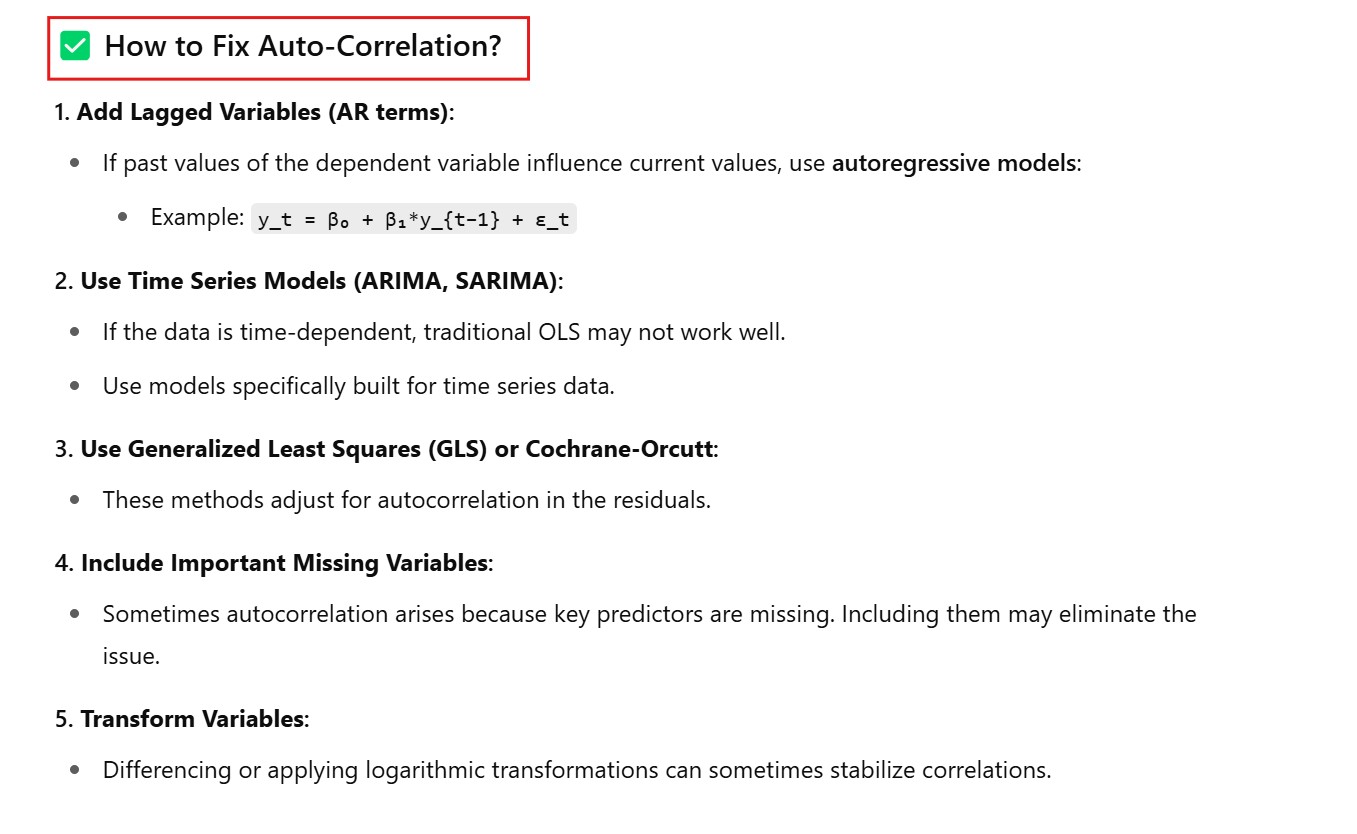
(21) What Is ACF Plot ?

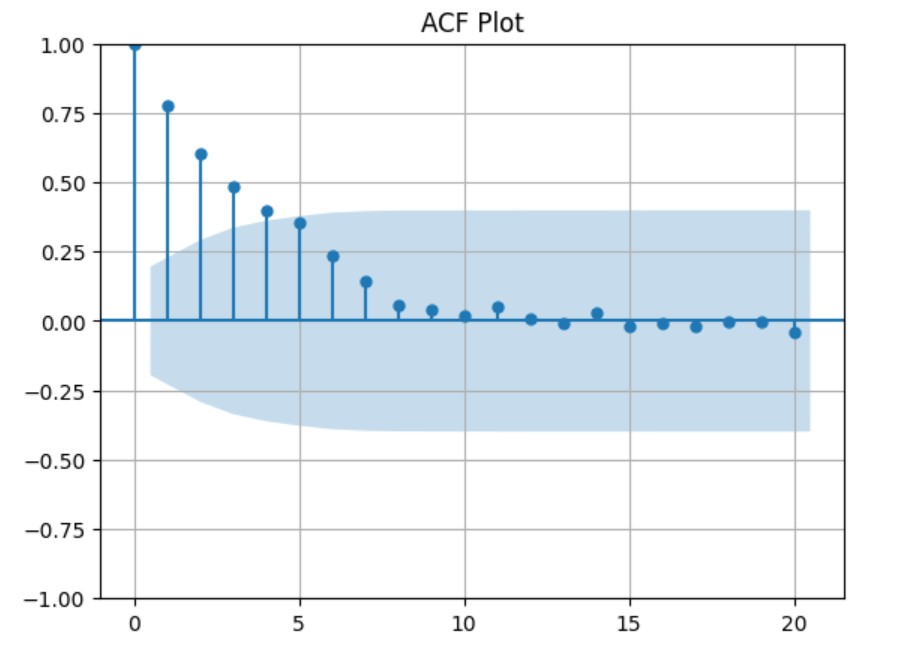
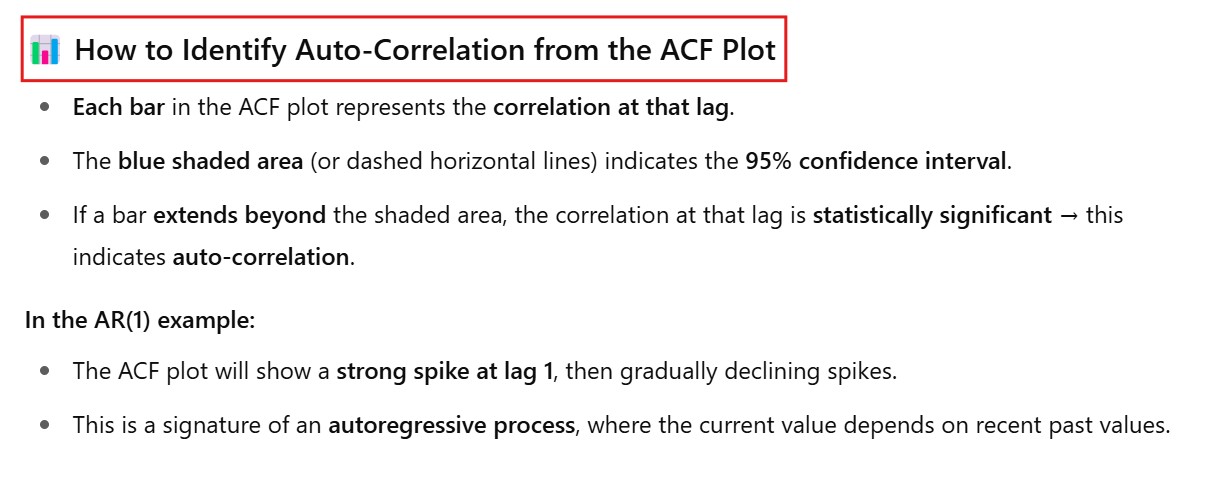
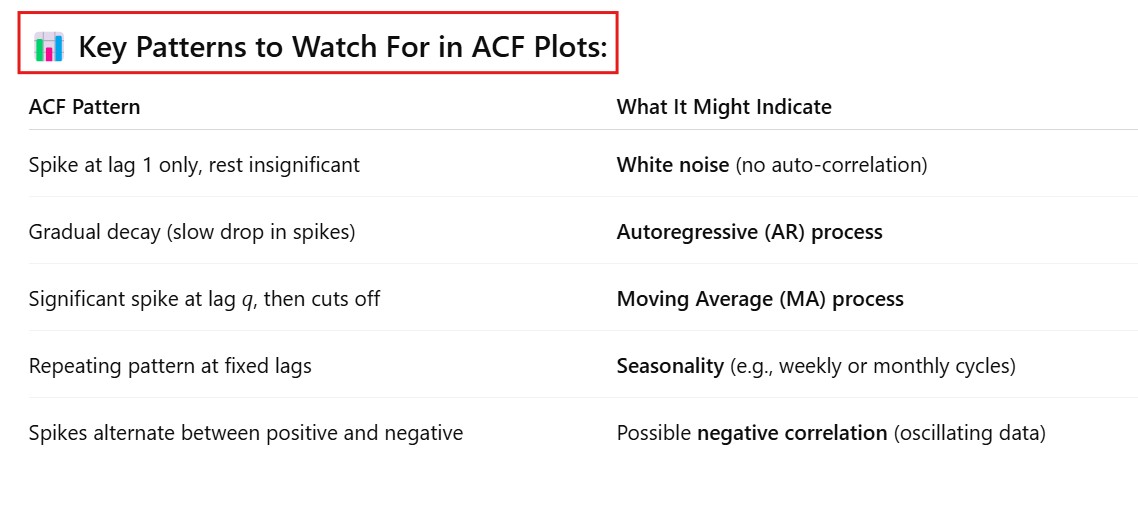
(21) What Is PACF Plot ?


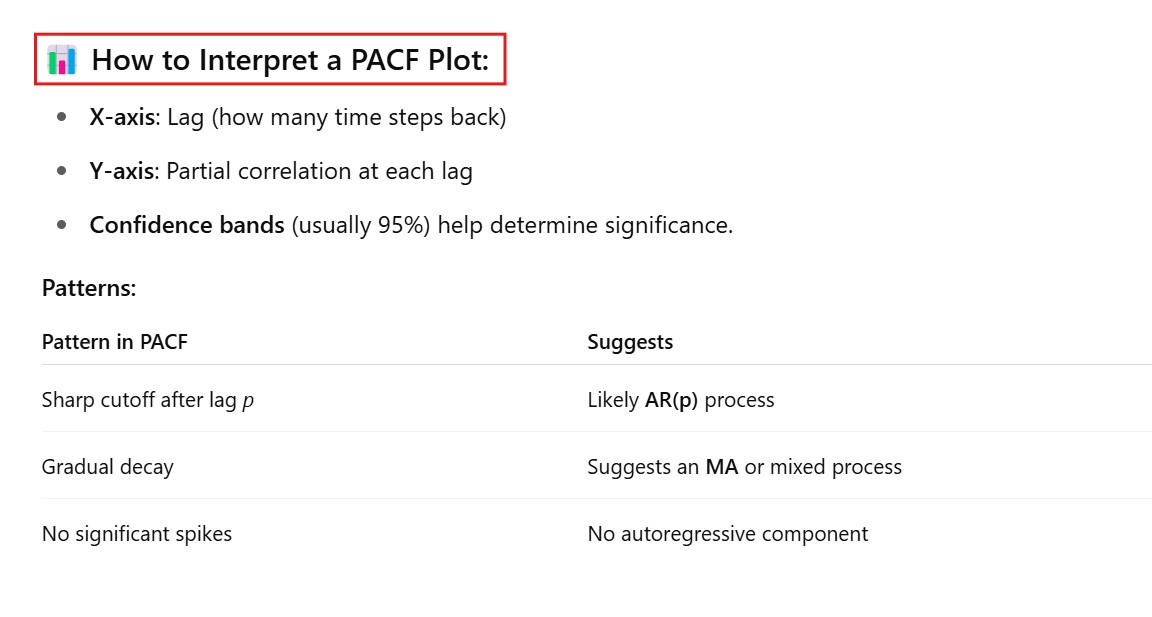
(22) Difference In ACF & PACF .
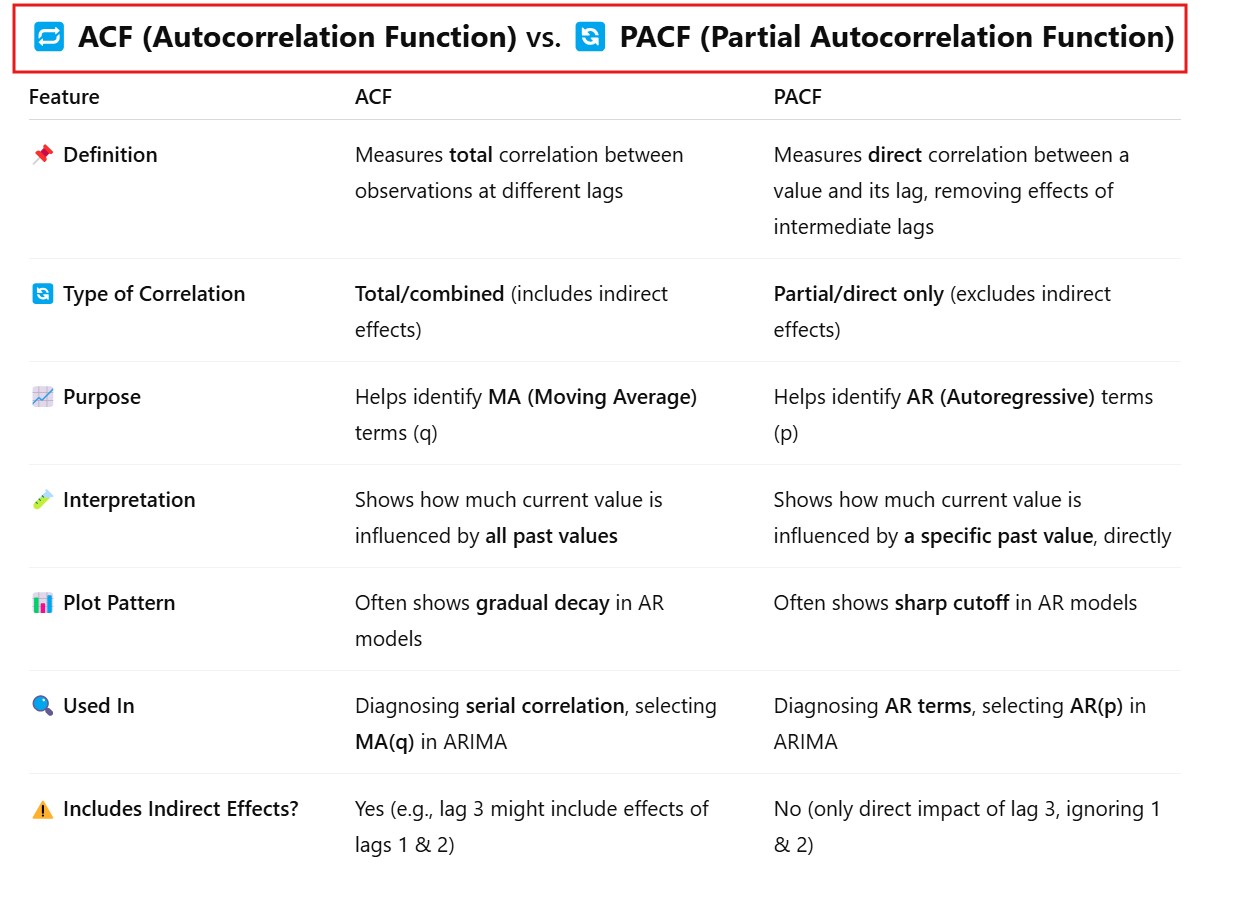
(23) What Is Skewness ?

